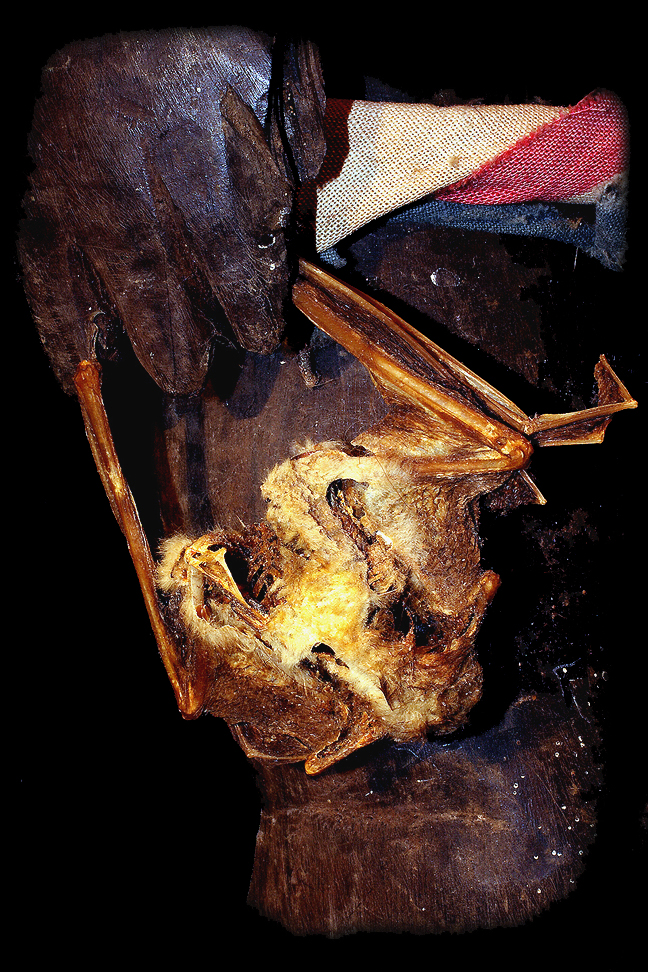

PALAWAN TRIBE:
HAND CARVED "IRON" WOOD
TEXTILE, BEADS, PIGMENT, WOOD, FIBER
PUBLISHED FULL PAGE, IN THE BOOK ENTITLED: "TEN SOUTHEAST ASIAN TRIBES FROM FIVE COUNTRIES" PAGE #137
PALAWAN TRIBE ANTIQUE TRIBAL USED 19TH CENTURY AUTHENTIC "TAU TAU" STATUE. THIS RARE AND UNUSUAL STATUE IS HAND CARVED FROM A HARD "IRON" WOOD! THIS IS AN EXTREMELY RARE AND EXTREMELY UNUSUAL ITEM FROM THE PHILIPPINES; PALAWAN ISLAND, WHERE THE PALAWAN TRIBE INHABIT! IT'S IN EXCELLENT CONDITION OTHER THAN A FEW INCONSEQUENTIAL SCRATCHES. IT'S A STANDING NUDE FEMALE STATUE THAT HAS ANCIENT STRINGS OF MULTICOLORED GLASS TRADE BEADS STRUNG AROUND THE NECK, SHE WEARS A CIRCULAR "BALACKA," O-KONG," "SOCYOP" HAT ON THE BACK OF HER HEAD. THERE ARE OLD FADED WHITE AND RED TRADE CLOTH ARM BANDS ON EACH ARM WITH A THICK WASTE BAND MADE OF THAT SAME COLORED MATERIAL! IT MEASURES APPROXIMATELY 26 INCHES LONG, BY 7 INCHES WIDE, BY 5 INCHES DEEP! THIS UNUSUAL STATUE HAS A GREAT OLD ANTIQUE PATINA THAT SHOWS WEAR AND SIGNS OF TRIBAL USE AND FEATURES VERY FINE DELICATE FACIAL FEATURE CARVINGS. TRACE ELEMENTS OF PIGMENT ARE EVIDENT! IT HAS A COLLECTION CATALOGUE NUMBER ON THE BACK THAT READS: 500A. THERE IS A DRIED OUT OLD BAT, THAT WAS PART OF A TRIBAL SACRIFICE, WRAPPED AROUND ITS' WAIST WITH BLUE TRADE CLOTH THAT ALSO HOLDS A SMALL BUNDLE OF SACRIFICIAL FIBER + STICKS. EVERYTHING IS COMPLETELY ORIGINAL AND IN EXCELLENT ANTIQUE CONDITION. THERE ARE NO REPAIRS, RESTORATION, OR MISSING PIECES! IT'S A ONE OF A KIND; EXCELLENT EXAMPLE. AN AUTOGRAPHED; SIGNED COPY, BY THE AUTHOR, OF THE BOOK; "TEN SOUTHEAST ASIAN TRIBES FROM FIVE COUNTRIES" IS INCLUDED WITH THIS PIECE THAT HAS A PICTURE OF THIS STATUE IN IT!
"At tau" are a type of effigy made of wood or bamboo. "At tau" are believed to have originated in the 19th century. They were once produced only for the wealthy, to reflect status and wealth.
The Palawans were originally a nomadic tribe in Southern Palawan until agrarian settlers started to occupy their once vast domain. The tribe would exploit the most fertile piece of land and move on to next. Their family units were very small, possibly due to high mortality rates. They built their houses usually on a hillside but close to the river or stream using four skinny trunks of trees. The floor is roughly 15 to 20 feet from the ground. Families used a slanted log to climb or to enter their houses, except for single or bachelor's shanties where a suspended rope is preferred.
They hunt wild animals using spears with a lethal poison at the tip. They catch fish by using a special root sap that is diluted in a shallow stream or river. The tribe hardly domesticate chicken nor hogs although dogs were their favorite pet because they can also be used in hunting. They were naive in socializing with their outside world, and they would welcome you with extreme precaution as they were always scared of getting sick. At the onset of this fear, they would immediately abandon their area. It is believed that they have the shortest life span of all peoples but no statistical data are however available to support this claim. They do not have a concept of year or years. When asked when were they born, they would reference it to a standing tree, explaining that they were born when a particular tree was just about a certain height.
The Palawan tribal people, also known as the Palawano or the Pala'wan, are an indigenous ethnic group of the Palawan group of islands. They are divided into four ethno-linguistic sub groupings based on Lewis (2009), Ethnologue: Languages of the World. These are the Quezon Palawano which is also known as the Central Palawano; the Bugsuk Palawano or South Palawano; Brooke's Point Palawano; and Southwest Palawano. Palawanos are more popularly known as Palawans, which is pronounced faster than the name of the province.
The Quezon Palawano subgroup are found in Southern Palawan, particularly on the western section of the municipality of Quezon, Palawan including the eastern part of Abo-abo of the municipality of Sofronio Espanola, going southward down to the northern section of the municipality of Rizal. A large group of Palawans can also be found in Sitios Gugnan, Kambing, Tugpa, and Kalatabog of Barangay Panitian. The Taw't Bato of the municipality of Rizal at the foot of Mt. Matalingahan also belongs to this same Palawan tribal group although their language is 15 percent different from the Quezon Palawanos.